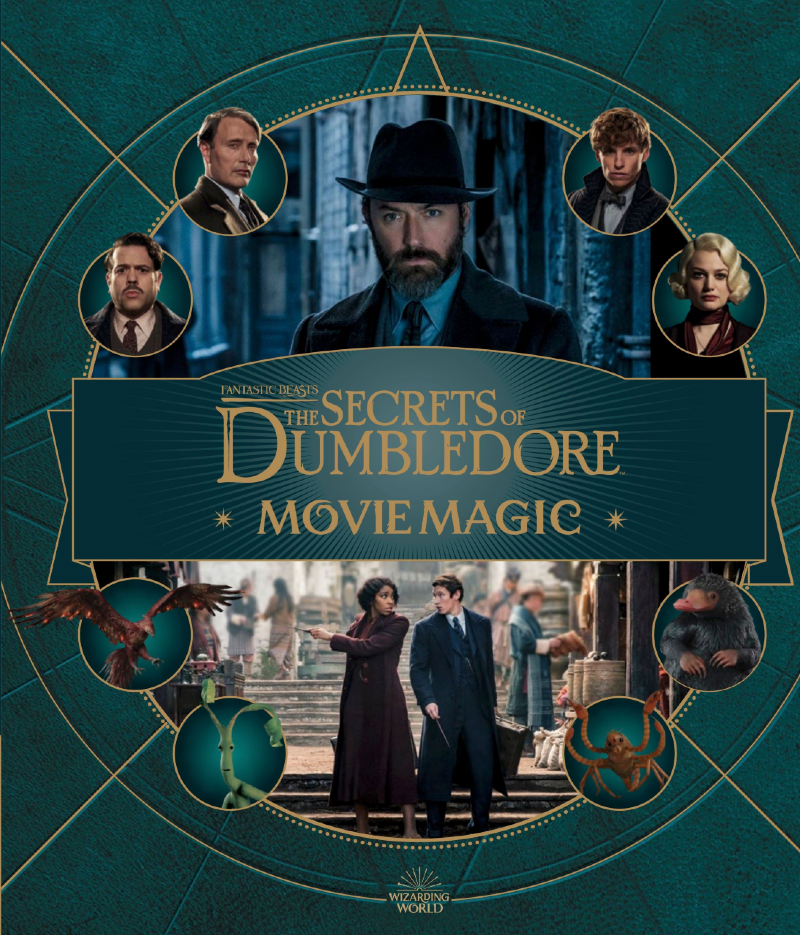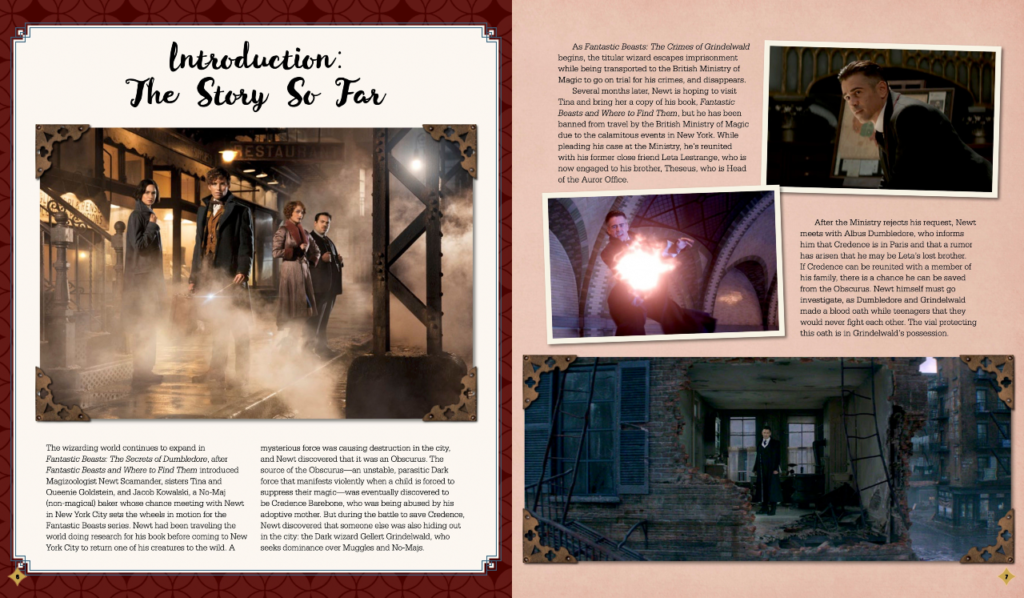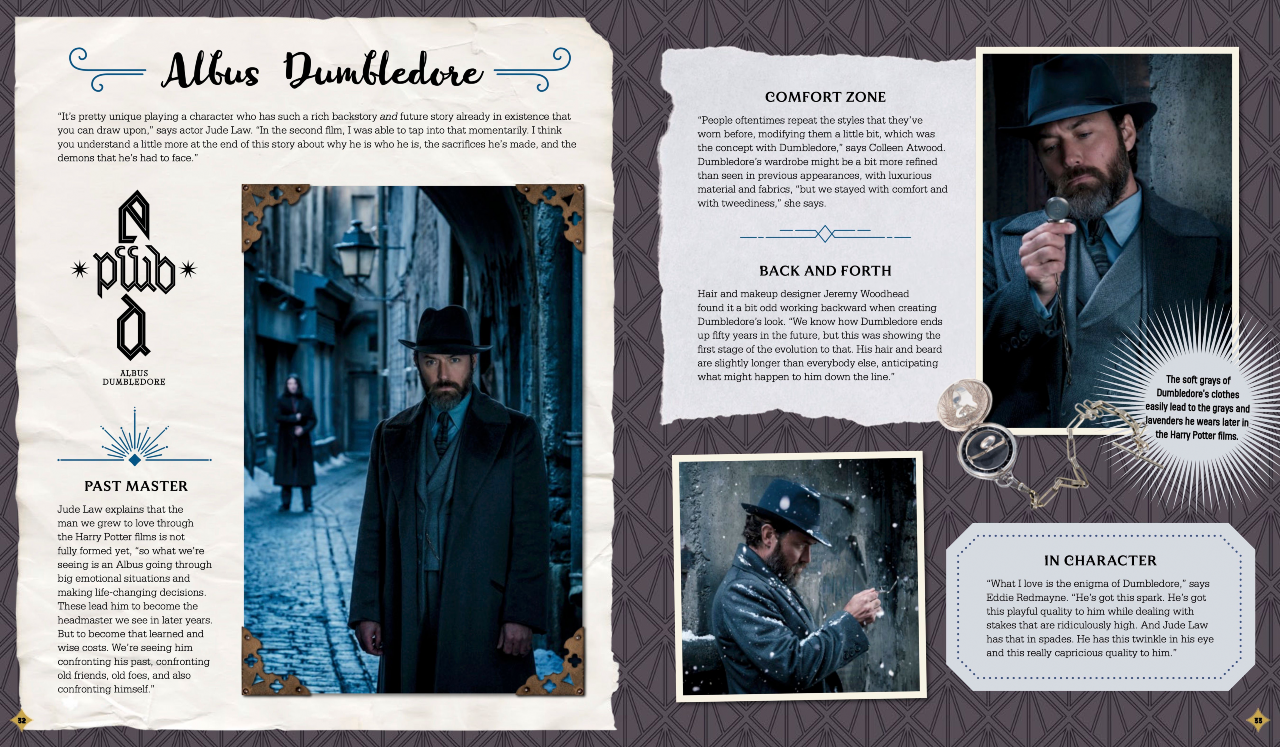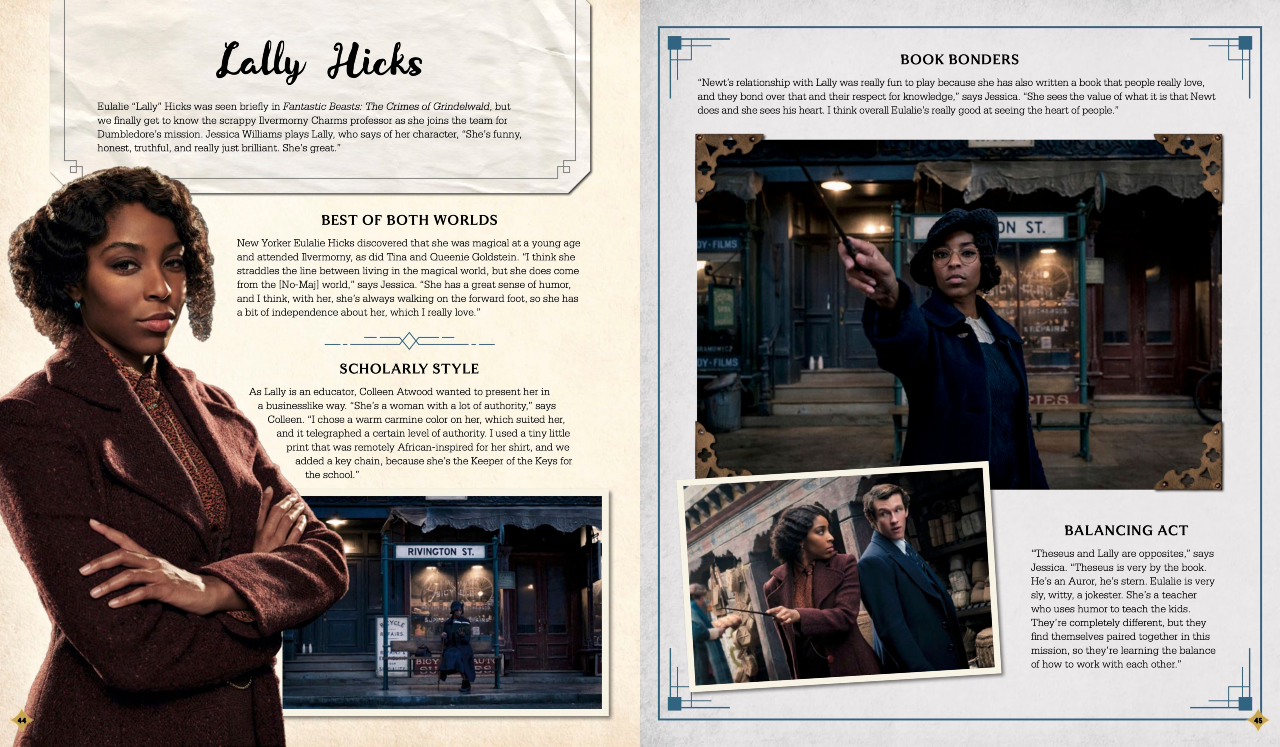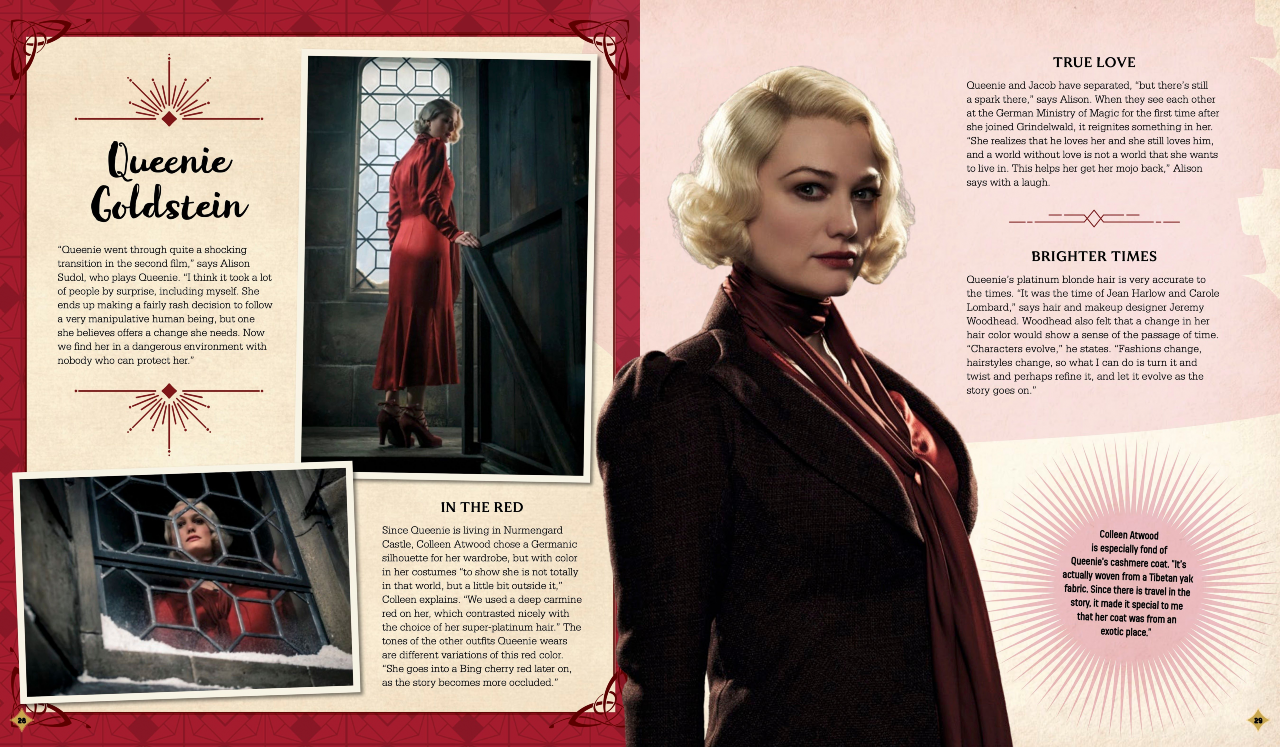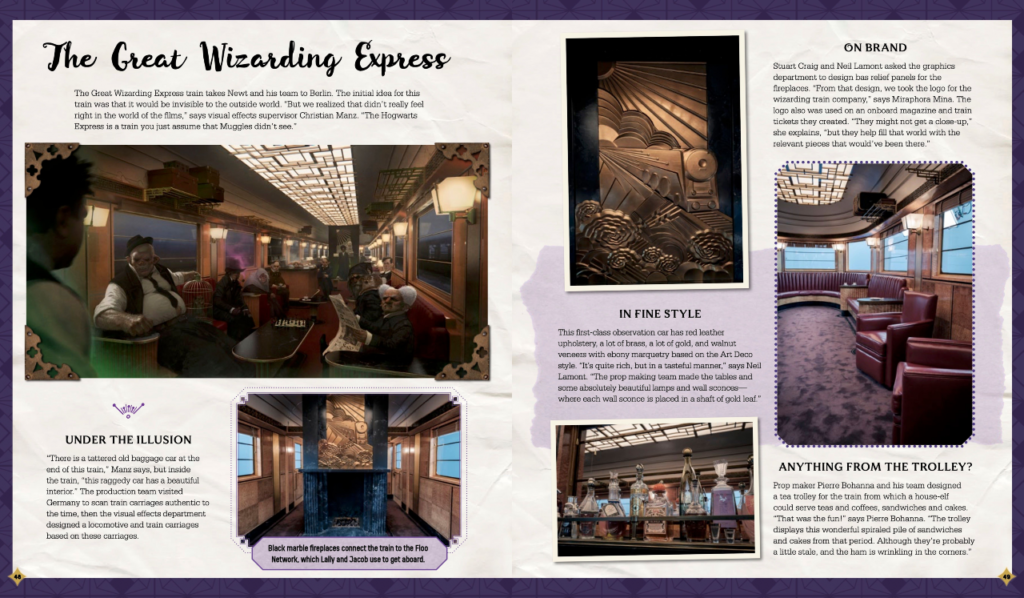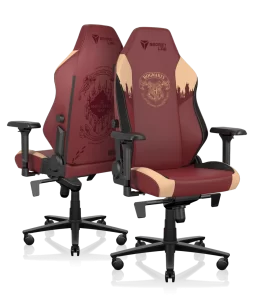I always like to start off by asking people how they first got introduced to the Wizarding World and what made it so appealing to them. Can you tell me a little about that?
When Harry Potter and the Sorcerer’s Stone was published in the United States, I was working as an editor at a children’s book publisher (one that was started by a mouse). So, of course, I wanted to check out the “competition,” but I was hooked from the start. A story about a bespectacled boy who learns he’s a wizard? A castle in Scotland where students learn magic? A girl who hangs out in the library and reads books, and a ginger boy who’s the best and most loyal of friends? A spell that would wash your dishes? Not only are the events of Harry’s story enthralling and chapter-turning, [but] the characters in the story are [also] relatable and inspiring. I, too, have been called an “insufferable know-it-all,” but as it relates to the Wizarding World films, it’s in the best possible way.
Can you explain your process when it comes to writing a “behind-the-scenes”-style movie companion book? Where do you like to start when you tackle a job like this?
Once the topic of the book is decided, I look to find what story I can tell. The design and production of films such as these is often as dramatic as the story of the film itself. After reading all the source material I can gather on the subject, a theme is often revealed, and I use that as the “spine” of the story. The Creature Vault told the tale of how the designers used the natural world as the underlying principle for the fantastical creations seen onscreen. For The Hogwarts Movie Scrapbook, I tried to capture the feeling of what academic and social life would be like for a student at the school. Of course, for the books I’ve co-written about Wizarding World crafts, it’s about making sure no one glues their fingers together!
This book clearly takes a lot of research and goes deep into not only making the actual movie but also the story/world behind that inspires it. Where do you turn for research? Does a lot of that come directly from the actors or filmmakers?
As I begin work, Warner Bros. Studios and [t]he Blair Partnership supply me with interviews with the actors, producers, directors, and pretty much everyone involved in design and effects for each film. These include production designer Stuart Craig; Miraphora Mina and Eduardo Lima, the graphic artists who also do so much more; the set decorators and costume designers; prop maker Pierre Bohanna; the concept artists; the makeup and hair team; [and] both the special and visual effects teams . . . I feel as if I’m giving a thank-you speech at an awards ceremony! These materials provide incredible behind-the-scenes insight as they talk about their own research and inspirations in addition to the physical production. I’m also privileged to be shown the development art and graphic designs for each production. After each film has premiered (and I’ve watched it endlessly at home), I’m able to go online and get even more info as the filmmaking process can be talked about more freely.
How long do these books generally take to get to the shelves?
For the behind-the-scenes “making of” books, I generally start about a year before the film premieres (if I’m lucky!), but to meet its publication date, I need to deliver a manuscript within three months or so. Then there are lots of revisions as new images and info about the story come in before goes to print. It’s fast and sometimes crazy, but I’m not complaining!
Do you approach each of your books differently since they cover a variety of topics or do you go through the same process each time?
I approach each book individually as there’s lots to take into consideration. I write for both kids and adults (and the kid in all of us), so there are different stylistic choices to be made. And the topic itself usually suggests its own approach. As I write for different series - such as the Movie Magic books, the Movie Scrapbooks, or the Vaults - there needs to be a consistency within the line, though they should all still feel unique. I think the only thing that’s similar in my process is that I’m always looking to give Wizarding World fans the coolest, most interesting, and yes, magical, experience with each book. I am also a fan!
There are several exclusive interviews with the actors that bring the movie to life. Do you find you learn more about the story’s characters when you get to talk to the people who portray them?
Definitely! As many of the actors performed their characters over many years - ten in the case of those who worked on the Harry Potter films and so far, seven for Fantastic Beasts - they know them better than anyone. Not only do they discuss their character’s challenges and changes from a story viewpoint, [but] they [also] talk about how they and the directors came to the choices they made for their performances. You also get their true feelings about their costumes, the locations, the creatures, and whether or not it’s comfortable flying on a broom.
Did you have any trouble narrowing down the content or deciding what gets left on the cutting room floor? I would think there’s often so much more to talk about that doesn’t end up being published.
That’s the biggest challenge for me in writing these books; there’s so much I want to say and never enough pages to say it in! Even for Harry Potter: Page to Screen, which runs 520 pages, I was keenly aware that there wasn’t enough room to include everything we wanted to. But I have always made a point of ensuring that each new book I write contains material that hasn’t been heard before. I’m constantly combing through interviews and other sources for something new that could be used in the next book. And “single-subject” books, such as The Dark Arts or Christmas at Hogwarts Movie Scrapbooks offer the opportunity for me to do a deep dive and use everything I’m able to find on the topic. I still have an ever-growing database of behind-the-scenes material for the Wizarding World.
How do you compare the Movie Magic books to other books you’ve written, such as the 12-book Film Vault series?
Since the second Fantastic Beasts film, the Movie Magic books have been about each new film in the Fantastic Beasts series. (Before that, they combined both Harry Potter and Fantastic Beasts and addressed individual topics such as locations or artifacts.) Working on a book about a film that hasn’t been shown to the public yet has a different feel when I’m working on it because I haven’t seen it a zillion times and I’m still learning about it. It’s like the difference between going to a party where you know everyone and going to a party where you don’t know anybody. They’re both fun, but with new acquaintances, you want to make sure you don’t spill anything on your clothes! But the approach is still the same: tell a great story and make the book a magical experience for the fans.
You have an expansive knowledge of Wizarding World topics, and you’ve written about so many of them. How much more do you think you can get out on paper?
If I can be allowed to make a pretty cheesy comparison, writing about the Wizarding World is a bit like reading the Marauder’s Map; as you keep unfolding the paper, more and more is revealed. It took me years to find out something about the the [sic] creation of the Portkey [b]oot, but once I did, it immediately went into the next appropriate book. When I worked on the limited edition of The Wand Collection, I interviewed wand choreographer Paul Harris on a topic that had never been written about in a book. For The Broom Collection, the Warner Bros. Studios Archives provided blueprints and broom artifacts that had never been seen before, close up and in great detail. Another comparison would be to the Room of Requirement in Harry Potter and the Deathly Hallows – Part 2: you might not believe it, but there’s so much more underneath there to see!
What part of Fantastic Beasts: The Secrets of Dumbledore: Movie Magic was the most fun to write? Which part was the hardest?
Fantastic Beasts: The Secrets of Dumbledore is such a fun film that, of course, it was fun to write about. You could tell from the interviews what a great time the actors and filmmakers had making it, and I hope that comes through. As a book person, I loved writing about teacher and writer Lally Hicks (and Jessica Williams’s interview was hysterical), and as a train person, I was fascinated by [t]he Great Wizarding Express. The romantic trials of Jacob and Queenie! Newt and Theseus’s changing relationship! Dumbledore and Grindelwald’s relationship revelations! There were a lot of smiles and nods as I was writing it. Honestly, the only hard part was that some visual effects were still being created and/or completed after the manuscript was due, and I didn’t have a lot of final visuals on them. But be assured that any next book about Fantastic Beasts: The Secrets of Dumbledore will contain more information on these!
Did you get a chance to travel to set locations?
I wish the answer was different, but, sadly, no (though I’d love to!). The timing on the books is just too tight to allow it. But I take every opportunity I can when I’m not writing to immerse myself in the Wizarding World, whether it’s taking the Warner Bros. Studio Tour outside London, spending time in the Universal Studios theme parks, or seeing any and all Wizarding World exhibitions, where I take lots of photos of the costumes and props on display. I also eat way too many Chocolate Frogs (it’s research!)
Do you have a favorite topic or movie you’ve covered?
I struggle with having favorites, because I see something in each film story that I like (although Nagini freaks me out). Watching Neville grow from a clumsy, insecure boy to the hero we always knew he was is why he’s one of my favorite characters and I like writing about his transformation, both physical (that fat padding!) and emotional. I like writing about Hermione because she truly is “the brightest witch of her age” and we know-it-alls have to support each other. I like writing about Newt’s relationship with the beasts and the puppeteers who bring them to life. I like writing about costumes because I’m into history and embroidery, and the artifacts, because it’s fascinating how the prop makers and graphic designers produced them. (Oh no, it’s another awards thank-you speech!) My favorite movie is always the next new movie I’m writing about because I learn about new characters, new locations, and new magic of the Wizarding World. Yes, it’s no surprise - I’m a Ravenclaw!

